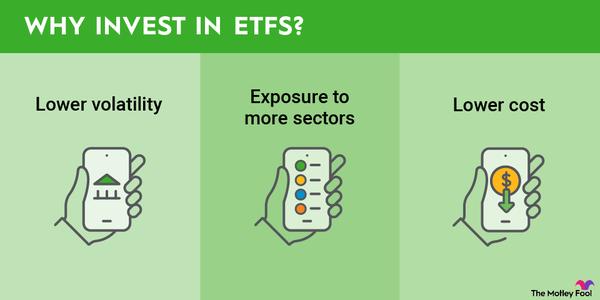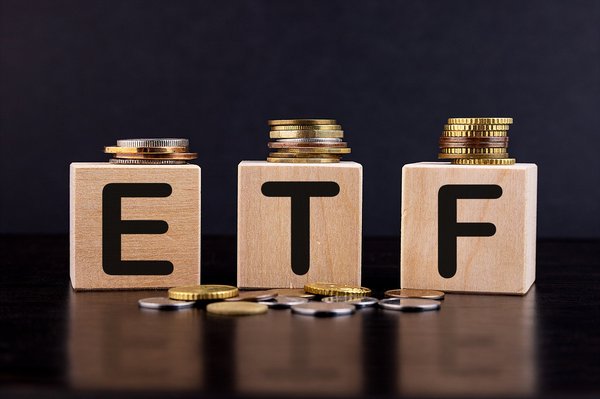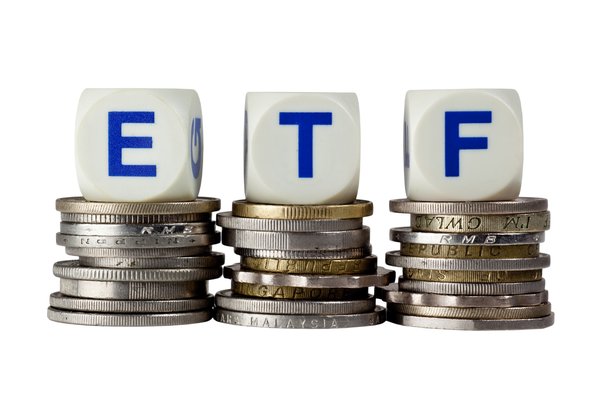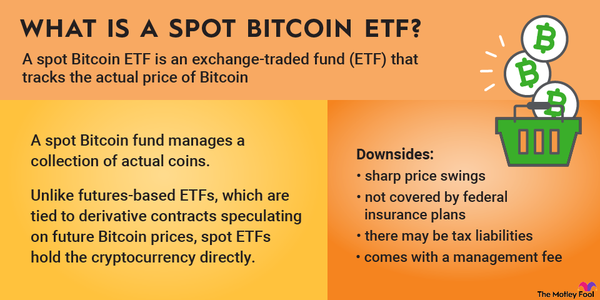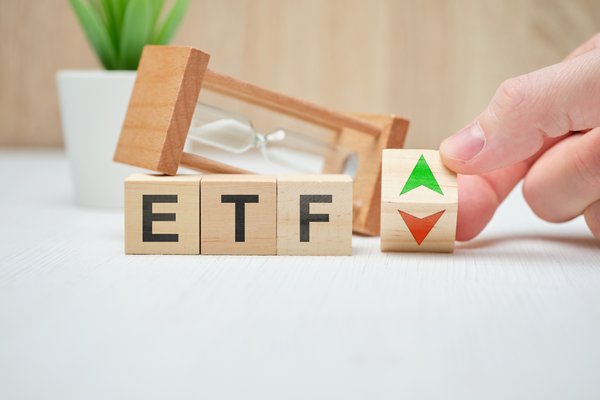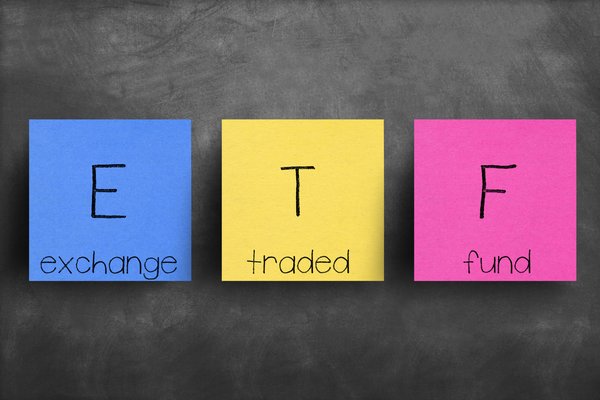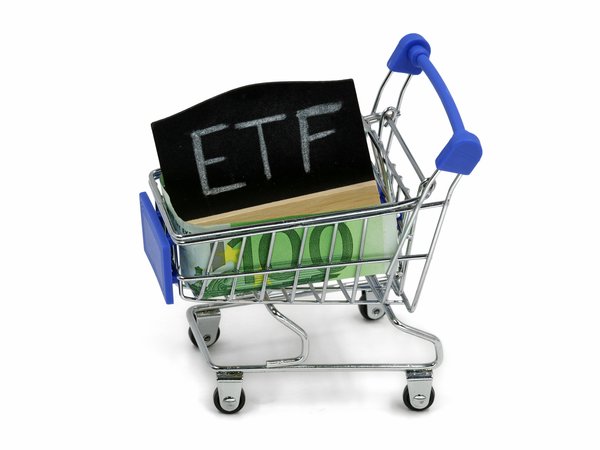As of March 14, 2025, there are 4,095 U.S.-listed exchange-traded funds (ETFs), and of those, 808—or nearly 20%—are bond ETFs.
Bond ETFs invest in a diverse range of fixed-income securities, including government bonds, corporate bonds, municipal bonds, and mortgage-backed securities. These funds follow rules-based indexes or are actively managed to provide investors with steady income and risk-adjusted returns.
Compared to stocks, bonds may seem boring, but they play a critical role in portfolio diversification. Bond ETFs help reduce overall risk, generate consistent income, and serve as an effective tool for portfolio rebalancing, especially during periods of market volatility.
Whether you're seeking stability, yield, or a hedge against stock market downturns, bond ETFs offer a valuable solution for investors of all types.

How bond ETFs work
How bond ETFs work
Bond ETFs function by pooling a basket of bonds, which normally trade over-the-counter (OTC). However, these bonds are packaged into an ETF to trade on exchanges, allowing investors to buy and sell them just like stocks.
The selection process for bonds varies depending on the ETF’s investment strategy. Some bond ETFs track an index, meaning they attempt to replicate a specific set of bonds that fit predefined criteria. Others use active management, where fund managers select and adjust holdings based on their outlook on interest rates, credit conditions, or other economic factors.
When a bond is included in a bond ETF, its price fluctuations impact the overall ETF’s value. Investors in the ETF experience price changes as underlying bond values rise or fall. Additionally, since bonds pay interest through semi-annual coupons, bond ETFs pass these earnings along to investors in the form of monthly distributions.
Bond ETFs are rebalanced periodically to maintain their portfolio characteristics. This means that as bonds mature or are no longer eligible, they are removed and new bonds are added, ensuring the fund stays aligned with its index rules or active management strategy.
Two key metrics investors should pay attention to when evaluating bond ETFs are:
- Yield to maturity (YTM): A theoretical measure of total return if all bonds in the ETF are held until maturity, accounting for coupon payments and price fluctuations.
- Duration: Expressed in years, this measures how sensitive a bond ETF is to interest rate changes. A higher duration means the fund is more affected by rate movements. Investors should always remember that bond prices move inversely to interest rates, i.e., when rates rise, bond ETF prices fall, and vice versa.
Types
Types of bond ETFs
Bond ETFs can be classified in many ways, including credit quality, maturity, and management style (active vs. passive). However, one of the easiest ways to categorize them is by issuer -- who originally created the bond.
- Treasury bonds. Issued by the U.S. government, these are considered the safest bonds available. They include Treasury bills (T-bills) with maturities under one year, Treasury notes (T-notes) with maturities from two to 10 years, and Treasury bonds (T-bonds), which mature in over 10 years.
- Treasury Inflation-Protected Securities (TIPS). A type of U.S. Treasury bond designed to protect against inflation. The principal value adjusts with the Consumer Price Index (CPI), ensuring that investors maintain purchasing power over time.
- Municipal bonds. These funds invest in bonds issued by state and local governments, often to finance public projects like infrastructure, schools, and hospitals. Many municipal bonds offer tax advantages, as their interest income is exempt from federal taxes and, in some cases, state and local taxes, as well.
- Mortgage-backed securities (MBS). These are bonds backed by home loans and can be agency-backed (issued by Fannie Mae (FNMA -6.14%), Freddie Mac (FMCC -5.88%), or Ginnie Mae) or non-agency, meaning they come from private issuers and carry more risk.
- Corporate bonds. Issued by companies rather than governments, these can be investment-grade (safer, lower yields) or high-yield (junk bonds), which offer higher returns but come with greater credit risk.
- Collateralized loan obligations (CLOs). CLOs are somewhat exotic instruments that bundle corporate loans (often from lower-rated borrowers) into structured debt securities with different risk levels, allowing investors to choose exposure based on their risk tolerance.
- Senior loans. Also called leveraged loans, these are floating-rate loans made to high-risk companies and sit at the top of the capital structure, meaning they get priority in repayment if the borrower defaults.
- Foreign bonds. Issued by governments or corporations outside the U.S. and can be from developed markets (like Japan, Germany, the U.K., and Canada) or emerging markets (like Brazil, India, China, and South Africa), each carrying unique risks like currency fluctuations.
- Leveraged/inverse bond ETFs. These don’t hold bonds at all but use derivatives like swaps and futures to deliver daily leveraged exposure (2x or 3x) or inverse returns (-1x, -2x) on a bond index, making them high-risk, short-term trading tools rather than long-term investments.
Benefits
Benefits of investing in bond ETFs
Liquidity
Unlike individual bonds, which trade over-the-counter (OTC) with limited price transparency, bond ETFs trade on an exchange, making them easier to buy and sell at market prices throughout the day. This allows investors to quickly rebalance their portfolios or adjust allocations without dealing with the complexities of the bond market.
Diversification
Many bond ETFs hold hundreds or even thousands of bonds, spanning various maturities, credit qualities, and issuers. This broad exposure reduces default risk from any single issuer and provides a more stable income stream than owning just a handful of individual bonds.
Regular income distributions
Most individual bonds pay interest semi-annually, meaning investors only receive income twice a year. In contrast, bond ETFs distribute interest monthly, offering a steady and predictable cash flow that can be reinvested or used for expenses.
Tax efficiency
Certain bond ETFs hold municipal bonds, which are exempt from federal taxes and, in some cases, state taxes, making them a tax-efficient income option for investors in higher tax brackets. Additionally, some bond ETFs use strategies to minimize taxable capital gains distributions, further improving their tax profile.
Risks
Risks associated with bond ETFs
While bond ETFs tend to be lower-risk than equities, they are not risk-free. Investors should be aware of the following potential risks when investing in bond ETFs.
Credit risk
Credit risk measures the likelihood that a bond issuer will default on its debt obligations. Higher-credit-risk bonds, such as junk bonds or emerging market debt, offer higher yields to compensate for the increased chance of default. However, during market downturns or recessions, these bonds are more vulnerable to losses as investors flee to safer assets.
Interest rate risk
Bond prices and interest rates move inversely. When interest rates rise, bond ETF prices fall, and vice-versa. This risk is measured by duration, which indicates how sensitive a bond ETF is to rate changes. Higher-duration ETFs carry greater risk, as their prices fluctuate more when interest rates shift.
Liquidity risk
While bond ETFs themselves trade on exchanges, their underlying bonds may not be as liquid. In extreme market conditions, such as the March 2020 COVID-19 crash, some bond ETFs holding less liquid corporate or municipal bonds traded at deep discounts to their net asset value (NAV), making it harder for investors to sell at fair prices.
How to choose
How to choose the right bond ETF
Selecting the right bond ETF depends on several key factors, including your investment horizon, risk tolerance, and cost considerations. Here’s what to focus on when making your decision.
Match duration to your time horizon and credit quality to your risk tolerance. The first step is determining how long you plan to hold the investment and how much risk you can handle.
- If you're investing for the short term and prioritizing safety, a Treasury bill ETF (which holds government bonds with maturities under one year) is a strong candidate.
- If you’re investing for the long term and can tolerate higher risk, a long-term corporate bond ETF may provide higher yields but comes with greater interest rate sensitivity.
Screen for fees and liquidity. Once you’ve determined your ideal duration and credit quality, narrow your choices by filtering for low-cost and liquid bond ETFs.
- Look for ETFs with a low expense ratio. Bond ETFs tend to have tighter margins than stock ETFs, so fees should be minimal.
- Check the 30-day median bid-ask spread, which measures trading liquidity. A lower spread means the ETF is easier to trade without incurring high transaction costs.
Top bond ETFs
Top bond ETFs to consider in 2025
These three bond ETFs offer broad diversification and low fees, making them one-size-fits-all options for a wide range of investors.
- Vanguard Total Bond Market Index Fund ETF (BND 0.28%). A core U.S. bond ETF, BND holds over 11,317 bonds, including U.S. Treasuries, mortgage-backed securities, and investment-grade corporate bonds, tracking the Bloomberg U.S. Aggregate Float Adjusted Index. With a 4.9% yield to maturity (YTM) and a 5.8-year duration, it provides balanced exposure to the U.S. bond market at a low 0.03% expense ratio.
- Vanguard Total International Bond ETF (BNDX 0.28%). This ETF holds over 6,800 bonds from developed and emerging markets outside the U.S., offering global diversification for fixed-income investors. It has a 4.7% YTM, a 7.1-year duration, and a 0.07% expense ratio, making it a cost-effective way to access international bond markets.
- Vanguard Total World Bond ETF (BNDW 0.28%). For those who want global bond exposure in a single fund, BNDW combines BND and BNDX in roughly 50/50 proportions, holding over 18,000 bonds. It offers a 4.8% YTM, a 6.4-year duration, and a 0.05% expense ratio, making it a well-diversified bond ETF for all market conditions.
Related investing topics
Should you invest?
So, should you invest in Bond ETFs?
With bond ETFs as cheap as they are today, there’s no reason not to have some allocation, even for the most aggressive, growth-focused investors. A small position in a bond ETF can add much-needed stability, helping cushion against stock market volatility.
Bond ETFs are also highly versatile. Whether you’re seeking income or safety, there’s a bond ETF to match your needs. Plus, because bonds have a low correlation with stocks, they can help with rebalancing when equity markets are down, ultimately improving your portfolio’s risk-adjusted returns over time.










